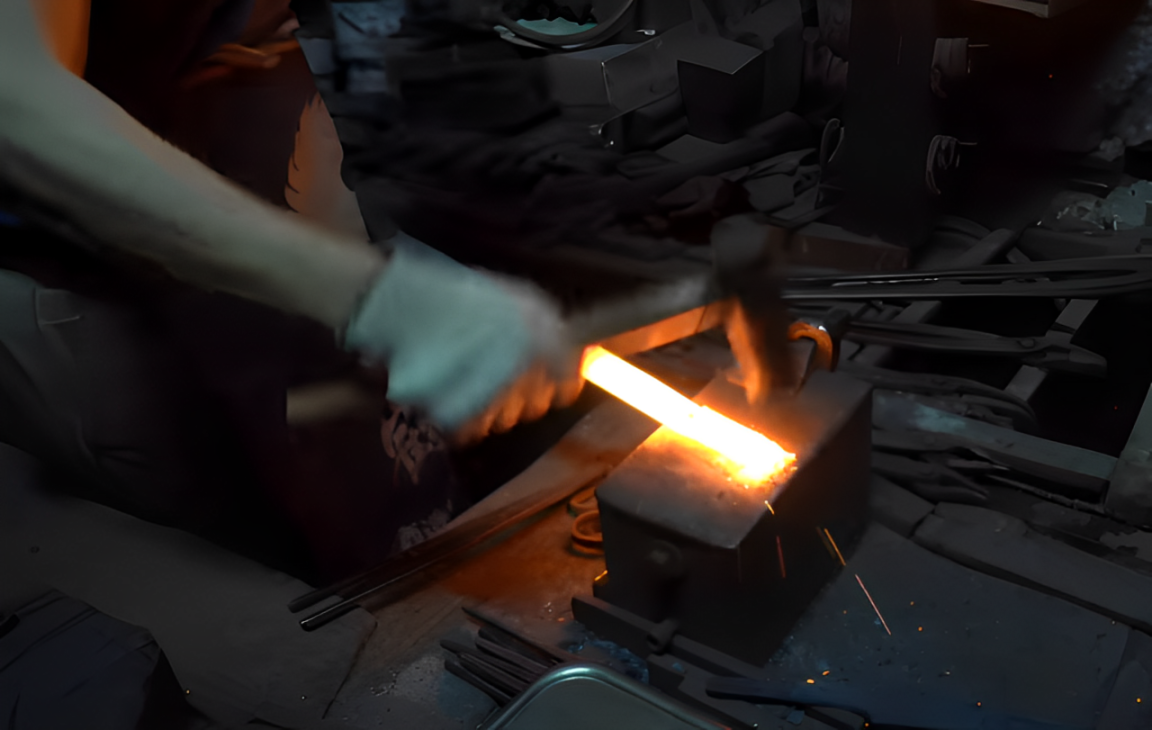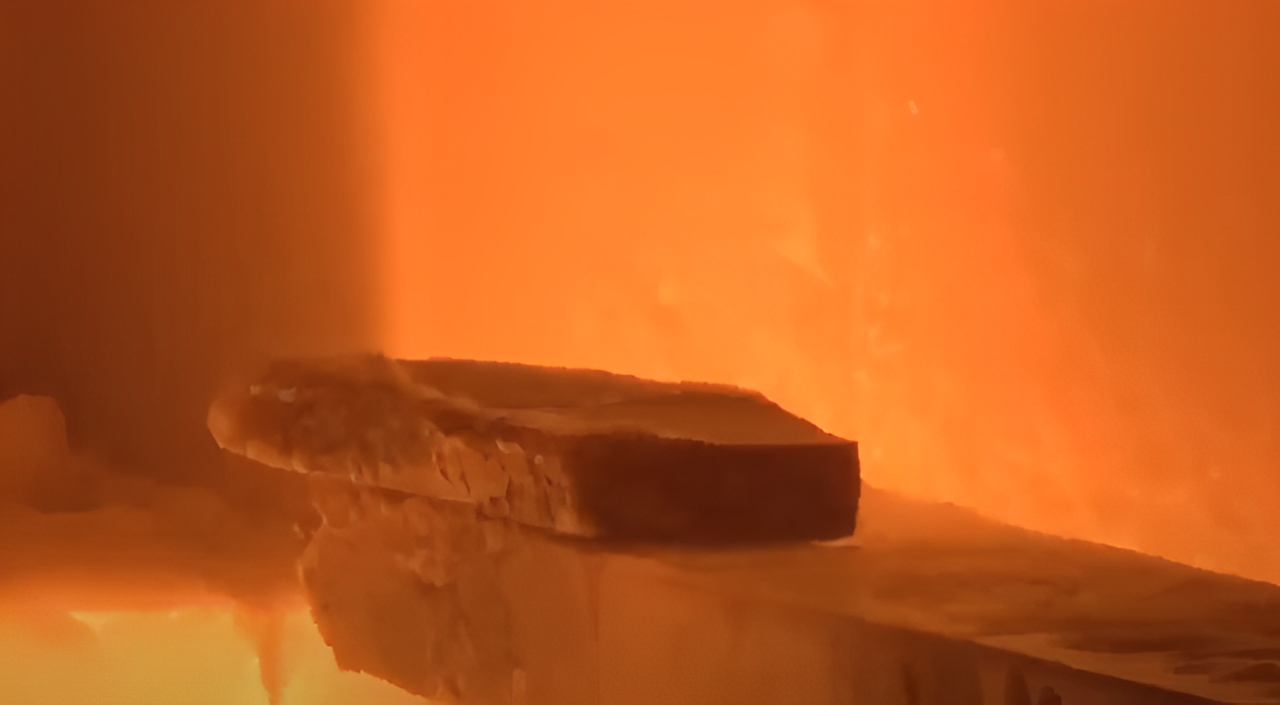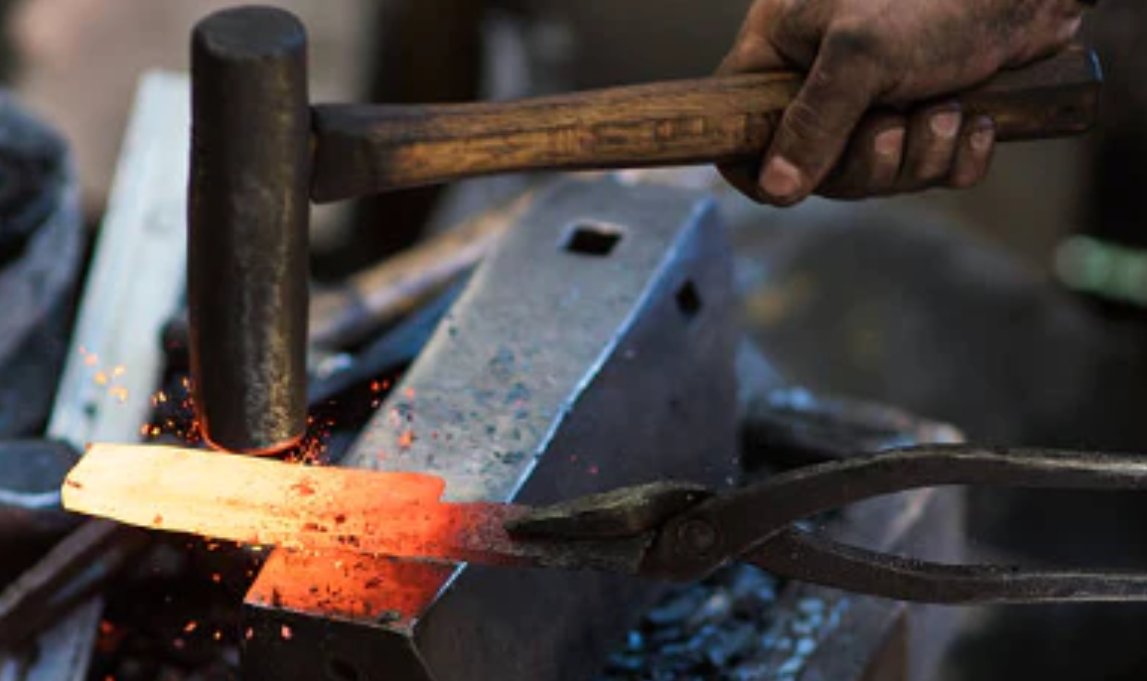
Type of Knife
-
Which Japanese Knife Is Right for You?
At first glance, the variety of Japanese knives can feel overwhelming—Yanagiba, Deba, Usuba… each with its own unique shape and purpose. But behind this diversity lies a deep cultural philosophy:
In Japanese cuisine, the cut comes before the cooking.
-
Unlike Western knives designed for versatility, Japanese knives are specialized tools crafted for precision, purity, and respect for the ingredient. One knife slices sashimi like silk. Another transforms a radish into delicate ribbons.
-
So why are there so many types of Japanese knives, and why is choosing the right one more important than you might think?
Whether you're a curious home cook or a seasoned chef, choosing the right knife opens the door to a new world of flavor, control, and expression.
Scroll down to explore the essential types of Japanese knives—and discover the one that speaks to your hand and your style.

Handmade by artisans
For the sake of sharpness, we put our soul into every strike.

Yanagiba
The KIREAJI Yanagiba is a traditional sashimi knife known for its long, slender blade. It allows smooth slicing that preserves the delicate texture and natural flavor of raw fish, making it an essential tool for sashimi preparation.

Yanagiba (Sakimaru)
The KIREAJI Sakimaru Yanagiba features an elegant curved tip favored in the Kanto region. Its katana-like silhouette adds a touch of flair, perfect for open kitchen counters where both performance and presentation matter.

Yanagiba (Kiritsuke)
The KIREAJI Kiritsuke Yanagiba is a hybrid knife combining the precision of a sashimi blade with the versatility of a Kiritsuke. Its wide, thick blade excels at slicing sashimi and handles a variety of tasks with ease.

Deba
The KIREAJI Deba is designed for breaking down whole fish with confidence. Its thick, sturdy blade and spine make it perfect for cutting through bones and heads. It is also well-suited for meat preparation, earning its place as a trusted kitchen companion.

Usuba
The KIREAJI Usuba is a vegetable knife with a thin, flat blade ideal for peeling and intricate cuts. Especially suited for katsuramuki (rotary peeling), it is a fundamental knife for mastering traditional Japanese vegetable techniques.

Gyuto
The KIREAJI Gyuto is a Japanese take on the Western chef’s knife. Versatile and well-balanced, it handles meat, fish, and vegetables with ease, making it popular for a wide range of cooking styles.

Petty
The KIREAJI Petty is a compact utility knife perfect for peeling fruit and detailed trimming. Small yet sharp, it’s an everyday essential for precise kitchen prep.

Garasaki
The KIREAJI Garasaki is a heavy-duty knife built to debone fish and poultry. With its thick, durable blade, it stands up to rigorous professional use and delivers strength where it’s needed most.

Other Types
KIREAJI also offers specialized knives like the Takohiki for clean, horizontal sashimi cuts and the Fuguhiki for delicate, paper-thin slices needed in fugu preparation. Every knife reflects Japan’s tradition and dedication to bringing out the best in ingredients.
Main Type of Japanese Knife
-
Video Provided: YouTube Sabakeru Channel (part of the Nippon Foundation's "The Ocean and Japan Project")
-

The moment when iron and steel become one. Precision in temperature brings forth master craftsmanship
Forging iron to steel is all about perfecting the temperature. Raise it too high, and the structure weakens; too low, and they won’t bind. Every day, I proceed with utmost care, guided by the heat.
-
Want to dive deeper into the culture behind the blade?
-
Keep reading to discover why there are so many types of Japanese knives—and why choosing the right one matters more than you might think.
From culinary philosophy to cutting technique, this is where the true story of Japanese knives begins.
Why Are There So Many Types of Japanese Knives? — A Philosophy Where Cooking Begins with the Cut
-
I once heard a foreign chef mutter this in awe as they stood before a Japanese knife display:
“This feels more like a museum of blades than a shop!”Names like Yanagiba, Deba, and Usuba may sound unfamiliar, and their varied shapes can leave even seasoned cooks puzzled. But there’s a solid reason behind this seemingly overwhelming variety.
The sheer number of Japanese knife types exists because Japanese cuisine is rooted in a culture that places extraordinary value on the act of cutting.
-
A Philosophy That Says: “Cut First, Then Cook”
There is a traditional Japanese culinary philosophy known as “Kasshu Hōjū” (割主烹従)—which literally means, “Cutting takes precedence; cooking follows.”
In other words, the key to delicious food lies not in fire or seasoning, but in how it is cut. This is especially true in dishes like sashimi or decorative garnishes, where ingredients are served raw and untouched by heat.
In this context, the knife is not just a tool—it is the primary means of expressing the flavor, texture, and beauty of ingredients. The cut defines the dish, and mastering the blade defines the chef.
-

The Same Ingredient, A Different World—Just by the Knife
Take sashimi, for example. When sliced with a Yanagiba knife using a smooth, pulling motion, it delivers an impossibly silky texture that almost melts on the tongue.
In contrast, using a dull or unsuitable knife crushes the flesh, squeezing out moisture and dulling both taste and appearance.
Even something as simple as shredded daikon radish—called tsuma—depends on the knife. When cut with a Usuba knife, the strands remain crisp, fresh, and almost translucent.
There’s even a Japanese saying: “A beautifully cut daikon garnish is a dish in itself.”In Japanese cuisine, cutting is not just preparation—it is technique, it is expression, it is art.
-

Western vs. Japanese Cooking: Why Knife Culture Diverged
In Western cuisine, flavor is often developed through heat-based techniques like roasting or saucing. As a result, the way something is cut has less direct impact on taste or texture.
One general-purpose chef’s knife can often handle meats, fish, and vegetables alike.
But in Japanese cuisine, cutting is inseparable from the finished flavor. That’s why specialized knives were developed: a Deba for breaking down whole fish, a Yanagiba for slicing sashimi, and a Usuba for precision vegetable work.
The knife must suit the task, because the cut defines the outcome.
-
Where Tools Become Art—The Beauty of the Japanese Knife
Each Japanese knife is designed not just for function, but for peak precision and purpose.
・Yanagiba / Takobiki: For long, clean sashimi slices that preserve the fish’s structure
・Usuba: For delicate vegetable cuts like katsuramuki (rotary peeling)
・Deba: For cutting through fish bones without crushing the fleshThese knives are not just tools—they are functional works of art.
Everything from blade thickness and bevel angle to balance and handle design is fine-tuned to suit a specific culinary role.What’s more, professional chefs in Japan sharpen their own knives, adjusting them to match their personal grip and cutting style. Over time, the knife becomes an extension of the chef’s hand—a reflection of their discipline and craft.
-

In Conclusion: The Passion Behind the Variety
So why are there so many types of Japanese knives?
Because Japanese cuisine is built on the belief that how you cut an ingredient determines how it will taste.
Each knife was born from the desire to bring out the best in every ingredient, through the most appropriate and respectful cut.In Japan, a knife is not just a utensil—it’s a tool of expression, a symbol of respect for food, and a reflection of a centuries-old culinary philosophy.
The diversity of Japanese knives is a testament to a culture where “cutting” is not a means to an end—it is the beginning of everything.
The Art of Precision: Why Using the Right Japanese Knife Matters More Than You Think
-
When you first hold a traditional Japanese knife, you might marvel at its elegance, balance, and razor-sharp edge. But there’s a deeper secret behind its beauty: Japanese knives are designed with specific purposes in mind—each one a specialized tool for a particular task. Understanding how to use the right knife for the right job is not just about efficiency—it’s about honoring the ingredients, preserving their flavor, and cooking with safety and intention.
-
1. A Commitment to Cleanliness: Protecting What You Can’t See
One of the most crucial reasons for using different knives for different foods is hygiene. Imagine slicing raw chicken and then moving straight to vegetables with the same blade. You’ve just invited harmful bacteria to dinner. By separating knives based on food type—meat, fish, vegetables—you significantly reduce the risk of cross-contamination. It’s a scientific, preventive approach that goes far beyond tradition; it’s about protecting those who share your table.
-

2. Taste That Speaks for Itself: Maximizing Flavor and Texture
Japanese single-bevel knives are designed to make clean, precise cuts that preserve the integrity of the food. Whether you're slicing sashimi or shaving daikon paper-thin, the right knife doesn’t crush or tear—it glides. This means less moisture and umami lost, and more of the food’s natural flavor and texture retained. The feel on the tongue changes, and so does the flavor—a truth any seasoned chef will confirm. In Japanese cuisine, where the goal is often to let ingredients shine with minimal interference, this difference is everything.
-
3. Smooth, Safe, and Efficient: Tools That Work With You
The proper knife doesn’t just make cooking easier—it makes it safer. Try filleting a fish with a general-purpose knife, and you may end up with a chipped blade or worse, an injury. Japanese knives like the deba are built thick and strong for bones, while petty knives are nimble enough for detailed garnishing. Each blade is optimized for its task, reducing strain and letting the knife do the work. The result? Less frustration, more control, and a safer kitchen.
-

4. Elevating Expression: Where Technique Meets Art
Some cooking techniques are only possible with a specialized knife. Take the art of katsuramuki—turning a daikon into a long, translucent ribbon. It’s nearly impossible without a usuba, a knife designed specifically for this task. Using the right knife opens the door to new textures, presentations, and levels of refinement. For chefs and passionate home cooks alike, these knives aren’t just tools—they’re instruments of expression.
-
In Closing
Using different types of Japanese knives isn’t just about culinary technique—it’s a reflection of philosophy and aesthetic sensibility rooted in Japanese culture.
Sure, there’s value in the efficiency of using a single all-purpose knife. But when you embrace the mindset of “respecting the ingredient and cooking with intention,” you’ll find your culinary world expanding in unexpected and meaningful ways.
If you’re ready to take your cooking to the next level—
start by choosing just one Japanese knife that feels right in your hand, and use it as a way to listen to your ingredients.
You may be surprised how much more your food begins to speak.
FAQ About Type of Japanese Knife

Why are Japanese knives so expensive compared to Western knives?
Japanese knives are costly due to three main factors:
- Complex Manufacturing Process: Crafting Japanese knives involves selecting the right steel, forging, heat treating, sharpening, and finishing – all requiring high skill levels. Forging and heat treatment, crucial for the knife's sharpness, rely heavily on the meticulous work of experienced craftsmen. This labor-intensive process contributes to higher costs.
- High-Quality Steel: Japanese knives often use premium steels like Blue Steel or White Steel, known for their high carbon content and superior sharpness. These materials are rare and expensive, increasing the cost of the knives.
- Specialized Variety: Japanese cuisine demands specific knives for different ingredients, leading to a wide variety of specialized knives like Deba, Yanagiba, and Boning knives. Producing this diverse range adds to the overall cost.
In essence, the traditional craftsmanship, use of high-grade materials, and the need for diverse, specialized knives justify the high price of Japanese knives. However, their exceptional sharpness and durability can make them a worthwhile investment.
Why do Japanese use different knives for different ingredients?
Japanese knives, or "Wa-bōchō," are designed with specific types for different ingredients, primarily for two reasons: to enhance the flavor and texture of the ingredients and to improve cooking efficiency. Japanese cuisine values the natural taste of its ingredients. Using the right knife for the right ingredient ensures clean cuts that preserve the ingredient's flavor and texture. For instance, a Deba knife is used to cut through fish bones, while a Yanagiba knife is used for thinly slicing sashimi, each tailored to its specific task.
Moreover, using the appropriate knife for each ingredient can significantly reduce preparation time. A Deba knife efficiently processes fish, and a Usuba knife is perfect for slicing or chopping vegetables with ease. The right knife ensures minimal effort and smoother cooking.
In essence, the variety of specialized Japanese knives allows for the optimal enhancement of ingredient flavors and more efficient cooking, embodying the wisdom of traditional Japanese culinary practices.
What makes Japanese knives so exceptional in quality and performance?
Japanese knives are renowned for their exceptional quality due to a combination of traditional craftsmanship, advanced technology, and generations of expertise in steelwork. They are characterized by three key attributes: thinness, hardness, and sharpness. The blades feature thinner, sharper bevels crafted from harder steel, enabling them to maintain their edge for a longer period. This blend of qualities makes Japanese knives highly effective and sought after in culinary circles.
How do Japanese knives differ from Western-style knives?
The main difference between Western and Japanese knives lies in the way the blade is sharpened.
Japanese knives (single edged knife):
- The blade is sharpened on only one side.
- When force is applied, the knife tends to move towards the side without the edge, making it suitable for slicing and peeling tasks.
- Typical examples include Yanagiba and Deba knives.
- Commonly used in preparing Japanese cuisine.
Western knives (double edged knife):
- The blade is symmetrically sharpened on both sides.
- The knife moves straight in the direction of the applied force, making it suitable for cutting and chopping tasks.
- Typical examples include Chef's knives and Paring knives.
Additionally, there is a difference in weight balance; Western knives tend to be heavier near the blade, while Japanese knives often have more weight towards the end of the handle.
Thus, by choosing between Western and Japanese knives according to the task, one can achieve more appropriate sharpness and cutting results.

The Origin of Craftsmanship
-
The Spirit of the Craftsman in Japanese Knives – The Beauty and Mastery of Traditional Blades
Japanese knives are not merely kitchen tools; they are the backbone of culinary art, embodying the soul of cooking. Each type of knife—be it the usuba, yanagiba, or deba—has a unique purpose, and its design and characteristics are the culmination of deep thought and exceptional craftsmanship. As artisans, we pour our hearts into every blade, hoping that chefs will feel that passion when the knife rests in their hands.
-
Take, for example, the usuba knife. It is crafted specifically to handle vegetables with precision and grace. Tasks like katsuramuki (thin slicing of daikon radish) test the chef's skill, and this knife’s sharpness and balance make all the difference. However, mastery requires care; maintaining the blade’s edge is essential. When properly tended to, the usuba knife elevates the quality of any dish, transforming ingredients into culinary art.
-
The yanagiba knife, on the other hand, is designed for sashimi, not to “cut” but to “pull through” the fish. This subtle yet deliberate motion enhances the fish’s natural luster and texture. The shape and material of the yanagiba knife reflect our commitment to empowering chefs to showcase their expertise. Regional variations, such as the Kanto and Kansai styles, highlight Japan’s diverse culinary traditions and regional pride.
-
Finally, the deba knife is a robust partner for filleting fish, with its thick blade and solid weight enabling clean cuts through bones while preserving the delicate flesh. When crafting a deba knife, we imagine the chef at work, facing their ingredients with focus and determination. This connection drives us to create tools that support their artistry.
-
Japanese knives are where the craftsman’s skill and the chef’s artistry converge, enabling the creation of extraordinary dishes. Their precision and complexity are a testament to the depth of Japanese cuisine and the bond between a craftsman and their tools. We hope that every slice, cut, and pull with a Japanese knife resonates with this shared dedication.
-
Beware of Inexpensive Knives
Inexpensive knives are often made with cost-cutting measures during production. Specifically, important elements such as sharpness, balance, and maintainability—key factors that directly affect quality—are not given sufficient investment. These aspects are often difficult to notice at first glance, but they can significantly impact the performance of the knife.
-
At KIREAJI, we offer authentic Japanese knives crafted by trusted artisans from Sakai City. Every knife is carefully handcrafted with a focus on sharpness, balance, and maintainability, ensuring you receive a high-quality product that provides long-lasting reliability and peace of mind.





